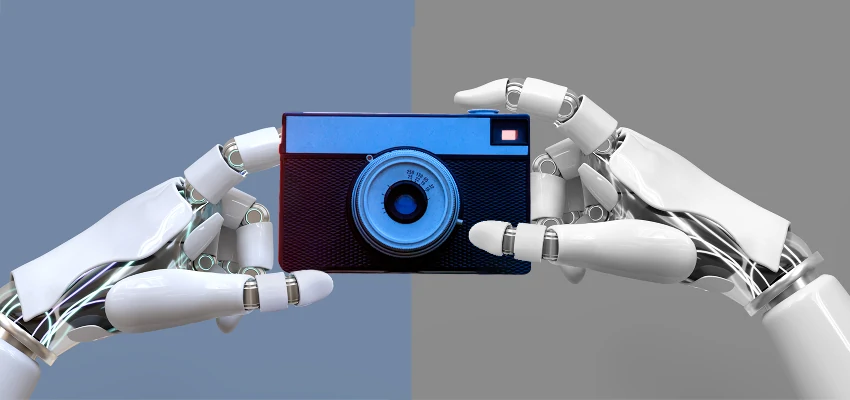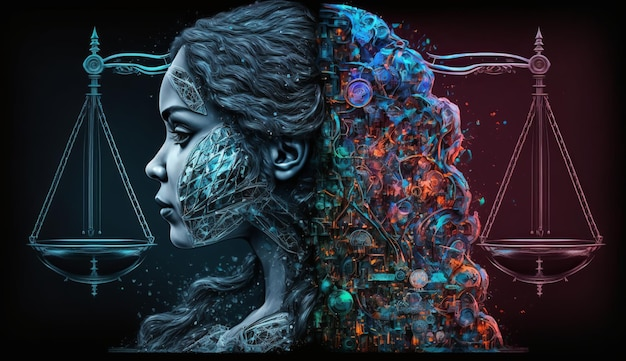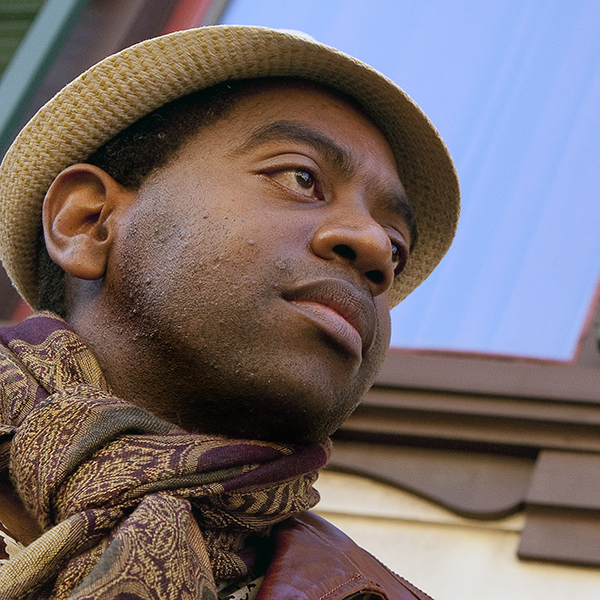AI and photojournalism are at a pivotal intersection that redefines visual storytelling in the digital age. As artificial intelligence continues to transform various industries, its implications for photojournalism present both exciting opportunities and significant challenges. From addressing photojournalism challenges like copyright and misinformation to enhancing image archives preservation, AI technology is reshaping how photographers document life’s most impactful moments. The impact of AI on media goes beyond just creation; it also raises critical questions about ethical AI use in photography and the preservation of authentic visual narratives. Understanding the balance between innovation and integrity will be essential for the future of photojournalism.
The convergence of advanced technology and visual journalism, often referred to as digital storytelling, is transforming our interaction with imagery. This new era emphasizes the necessity of adapting to innovations like machine learning and generative tools while grappling with the authenticity of captured moments. Keeping in mind the importance of safeguarding historical archives, the utilization of intelligent systems serves as both an asset and a challenge for professionals in this field. With a greater emphasis on ethical considerations, the discourse around responsible AI deployment is increasingly relevant, ensuring that the rich heritage of impactful imagery is preserved for future generations. Ultimately, navigating this technological landscape requires a thoughtful approach to maintain the truth and vibrancy of the photographic narrative.
The Integration of AI in Photography
AI has made significant inroads into the realm of photography, promising to revolutionize how images are created and experienced. From automating mundane tasks like cataloging and editing to generating entirely new visual content, artificial intelligence is reshaping the industry’s landscape. With tools that can analyze vast archives of photographs, AI offers a fresh perspective on historical content, allowing photographers and curators to breathe new life into forgotten narratives. This evolution of technology provides exciting opportunities to enhance creativity and streamline workflows for professional photographers, presenting a dual-edged sword that must be approached with caution.
However, as AI’s capabilities increase, it raises fundamental questions about the essence of photography as an art form. Photographers must now consider the implications of AI-generated images that blur the line between reality and fabrication. The potential for misinformation is enormous, especially when the public’s trust in visual media is already fragile. The challenge lies in harnessing AI’s potential while preserving the traditional values of photography: authenticity, emotional expression, and the connection between the photographer and the viewer.
Challenges Facing Photojournalism in the Age of AI
Photojournalism has always been a field that reconciles ethical considerations with the chaotic flow of information, but the advent of AI presents unprecedented challenges. One of the most pressing concerns is the preservation of image archives that serve as the cornerstone of historical documentation. Many vital photographs are at risk of being forgotten, pointing to a critical need for innovative solutions to safeguard these visual records. As Kira Pollack emphasizes, most images captured by photojournalists go unpublished, making archive management integral to the field. The deployment of AI in managing these archives could potentially revolutionize access, allowing a broader audience to engage with historical content.
On the flip side, the rise of AI also invites ethical dilemmas surrounding copyright and authorship. The potential for AI to scrape and learn from existing works without proper attribution or consent can threaten not only the livelihoods of photographers but also their legacy. The need for frameworks that ensure ethical AI use in photography is paramount as the industry navigates these challenges. Upholding the integrity of photojournalism, while leveraging AI to preserve an extensive visual history, will require collaboration across technology, media, and policy to create solutions that respect both creators and the integrity of their work.
Preserving Historical Narratives Through Image Archives
The importance of preserving historical narratives cannot be understated, especially in an era where visual media plays such a central role in storytelling. Photojournalism captures moments that define our collective experience, providing a visual history of events that shape society. As Pollack articulates, the challenge is not merely in preserving these images but in contextualizing them—creating immersive experiences that communicate the photographer’s intent and the emotions tied to each captured moment. AI can assist in tagging and categorizing these archives, making them more accessible to researchers, educators, and the public, ultimately ensuring that future generations can learn from the past.
Moreover, the ethical application of AI in preserving these archives will play a crucial role in building trust with audiences. By ensuring that the integrity of the original work is maintained and that the context of each image is preserved, AI can reinforce, rather than undermine, the truth conveyed through photojournalism. AI technologies have the potential to breathe new life into forgotten narratives, serving as tools for developing a deeper understanding of historical events and allowing photojournalists to share their important stories widely.
AI’s Impact on Media Integrity
The impact of AI on media integrity is a serious topic of discussion as it challenges the fundamentals of truth and authenticity in visual representation. In a time when the lines between real and artificial images are increasingly blurred, photojournalists must grapple with the implications of generative technologies. The ability of AI to create photorealistic images raises important questions about how these developments could mislead audiences and distort public perception. Ensuring that there remain ethical standards established within the media becomes essential to counteract this trend and maintain the trust that viewers place in photographic storytelling.
Media integrity is also at risk due to the rapid dissemination of AI-generated content across social media platforms. Without established guidelines, false narratives can quickly gain traction, complicating the responsibilities of photojournalists who strive to report on complex issues. As Kira Pollack’s work suggests, harnessing AI for responsible applications—such as organizing archives—can highlight the authenticity of genuine stories while fortifying a commitment to transparency within the photojournalism community. By engaging with technology thoughtfully and collaboratively, the industry can work to safeguard its integrity and uphold the standards of truth that are crucial for public trust.
Ethical Considerations in AI-Driven Photography
As AI-driven photography continues to evolve, ethical considerations are paramount. The rapid advancement of artificial intelligence poses difficult questions about ownership, especially when AI can generate images without any human input. Photographers are increasingly concerned about their work being used to train AI models without consent or compensation, raising fundamental issues surrounding copyright protection and intellectual property rights. To protect the rights of image creators, it’s vital for the industry to establish clear regulations regarding the use of AI in photography while promoting responsible practices that shield the interests of individual artists.
Conversely, the ethical use of AI in photography should promote inclusivity and representation within the industry. It becomes crucial to engage diverse voices in discussions around how AI technologies are developed and deployed. By prioritizing a range of perspectives, photojournalism can harness the power of AI to empower emerging photographers and ensure wider access to training and technological resources. Striving for ethical AI use not only protects existing creators but also fosters a collaborative environment for future generations to thrive within an increasingly AI-enhanced landscape.
The Role of AI in Enhancing Creative Expression
AI has the potential to augment creative expression within photography, offering photographers novel tools to experiment with their craft. Through advanced algorithms and machine learning, AI can assist in the ideation phase, providing creative suggestions based on existing trends and historical data. This capability enables photographers to explore uncharted territories in their work, challenging traditional conventions and redefining genres within the art form. By integrating AI into the creative process, photographers can push the boundaries of their imagination and expand their artistic vision while maintaining their unique voice.
However, the integration of AI in creative expression also raises the question of originality. As AI-generated content becomes more prevalent, the distinctive qualities that human photographers bring to their work may be diminished. It is essential for the photography community to foster discussions surrounding the balance between human creativity and machine assistance, ensuring the latter serves as a complement rather than a replacement. Moreover, encouraging both technology and artistry to coexist harmoniously will allow photographers to innovate while staying true to their artistic identity and emotional connection to their subjects.
Navigating the Future of Photojournalism
Navigating the future of photojournalism in the age of AI requires a proactive approach that embraces technological changes while maintaining a commitment to journalistic integrity. As the field evolves, photojournalists will need to refine their skills and adapt their practices to leverage AI’s potential effectively. This evolution might include acquiring knowledge about new tools and systems for managing archives or finding innovative ways to collaborate with technologists to enhance storytelling. Staying ahead of the curve will ensure that photojournalists not only survive but thrive in an increasingly complex media landscape.
In addition to technological adaptation, there is a need for ongoing discussions around ethical guidelines, copyright issues, and the role of photojournalism in society. Engaging with stakeholders across various fields—including ethics, policy, and technology—will help create a more informed and responsible approach to the use of AI in journalism. The goal is to ensure that photojournalism continues to provide a crucial perspective on world events while shaping the future of the media landscape. By embracing collaboration and innovation, the next generation of photojournalists can uphold the core values of their profession: truth, memory, and the essential human experience behind every photograph.
Exploring AI Tools for Cataloging Image Archives
To address the challenge of preserving photojournalism archives, AI tools can play a transformative role in cataloging and managing extensive collections of images. By utilizing machine learning algorithms, AI can analyze and categorize images based on various attributes such as content, context, and metadata. This capability allows journalists and archivists to organize vast collections, making it easier for researchers and the public to access the historical context of each photograph. As Pollack’s work highlights, the preservation of photojournalism archives is vital for maintaining an accurate visual history that narrates the events shaping society.
Moreover, AI-driven tools can enhance the discoverability of these archives, allowing for a more interactive experience for users. By providing dynamic content that reflects the photographer’s story and intent, AI can create richer narratives around individual images. This wouldn’t only increase the visibility of important journalism but also enhance the public’s understanding of significant historical events. In this capacity, AI acts as a bridge between past and present, ensuring that the voices of dedicated photographers continue to resonate in the collective memory, thereby preserving the integrity and legacy of photojournalism.
AI as a Tool for Empowering Photojournalists
In the current landscape of photography, AI represents more than just a technological advancement; it is a tool for empowerment. For photojournalists, AI can facilitate the management of workflows, enabling them to focus more on storytelling rather than technical challenges. By automating time-consuming tasks such as editing, tagging, and data organization, photographers can dedicate more time to capturing meaningful moments and diving deep into narratives. This shift allows for greater creativity and innovation within the field of photojournalism as AI becomes an ally in the quest for compelling visual storytelling.
Furthermore, AI tools can democratize access to photography resources and training. Emerging photojournalists can benefit from AI-assisted platforms that provide insightful feedback on their work and access to vast databases of existing images for inspiration. This opens the door for new voices to emerge in the industry, enriching the fabric of visual storytelling with diverse perspectives. As AI continues to evolve, it is crucial to ensure that these tools remain accessible and beneficial to all photographers, fostering an inclusive environment where creativity can flourish.
Frequently Asked Questions
What are the potential benefits of AI in photography and photojournalism?
AI in photography can enhance creativity, assist in image organization, and support the preservation of photojournalism archives. By automating tedious tasks and aiding in cataloging extensive collections, AI technology provides photojournalists with tools to manage their visual records more effectively, ensuring that important historical images are accessible and preserved for future generations.
How does AI impact photojournalism challenges regarding misinformation?
AI can significantly impact photojournalism challenges related to misinformation by helping verify the authenticity of images. As fake visuals proliferate, AI systems can analyze and cross-reference images against known datasets, enhancing the credibility of journalistic content and supporting the fight against digital deception in media.
In what ways can AI assist in image archives preservation in photojournalism?
AI can assist in image archives preservation by providing advanced sorting, tagging, and contextualization capabilities, making it easier to discover and access extensive visual histories. By leveraging machine learning, photojournalists can safeguard their legacies while ensuring that their archives remain relevant and usable in a rapidly changing digital landscape.
What ethical considerations should be taken into account when using AI in photography?
When employing AI in photography, ethical considerations such as copyright protection, authorship rights, and the potential for AI-generated misinformation should be prioritized. It is crucial to utilize AI responsibly to enhance, not exploit, visual storytelling, ensuring that the integrity of genuine photojournalism is upheld and that photographers’ rights are protected.
How can AI enhance the storytelling experience in photojournalism?
AI can enhance storytelling in photojournalism by providing deeper insights into images through analysis of composition, emotional context, and historical significance. By integrating AI tools, photojournalists can create more immersive experiences that convey the rich narratives behind their images, allowing audiences to engage with the visual history more meaningfully.
What are the key challenges of integrating AI into the field of photojournalism?
Key challenges of integrating AI into photojournalism include addressing concerns over misinformation, copyright violations, and the need to maintain trust in media. Additionally, navigating the delicate balance of using AI to enhance, rather than replace, human creativity is essential to preserving the core values of photojournalism, such as authenticity and accountability.
What role does Kira Pollack see for AI in preserving photojournalism’s future?
Kira Pollack envisions AI as a vital tool for preserving the future of photojournalism by enabling better organization, access, and contextualization of archival images. She believes that, through responsible use of technology, the legacy of photojournalists can be honored while also fostering public trust and promoting the essential values of truth and memory in visual storytelling.
| Key Points | Details |
|---|---|
| AI’s Impact on Photojournalism | AI poses both threats and opportunities for photojournalists including issues of copyright and misinformation. |
| Kira Pollack’s Perspective | As a visual storyteller and Shorenstein fellow, Pollack recognizes the dual nature of AI—its potential to enhance creativity and preserve visual legacies. |
| Challenge with Archives | Pollack emphasizes the importance of preserving photojournalistic archives, many of which remain unseen and hold significant historical value. |
| AI’s Role in Analysis | Through studies, AI has shown capability in interpreting complex conflict imagery, offering insights that enhance storytelling. |
| Preserving Visual Truth | Pollack aims to use AI to maintain the integrity of photojournalism by organizing and contextualizing archives ethically. |
| Future of Photojournalism | The fellowship provides Pollack a platform to explore AI’s implications on journalism and engage with diverse disciplines to shape its direction. |
Summary
AI and Photojournalism are at a crossroads where technology can profoundly influence the preservation and interpretation of visual narratives. As Kira Pollack emphasizes, while AI presents clear challenges such as misinformation and copyright issues, it also offers significant opportunities to revolutionize how archives are organized and accessed. By harnessing AI responsibly, photojournalists can not only safeguard their legacies but also enhance public understanding of historical events through innovative storytelling techniques. This dual approach ensures that the values of truth and authorship remain central to the evolution of the field as it adapts to the technological landscape.




